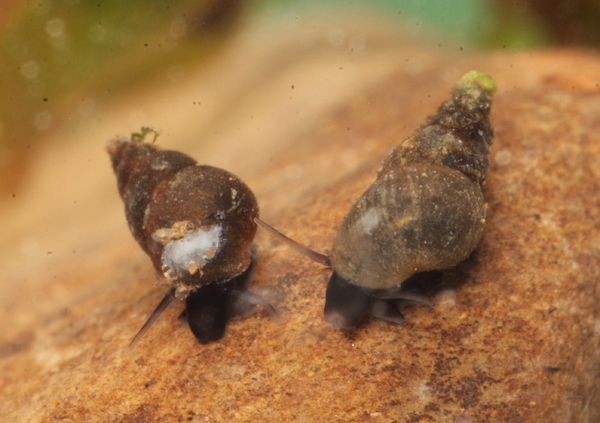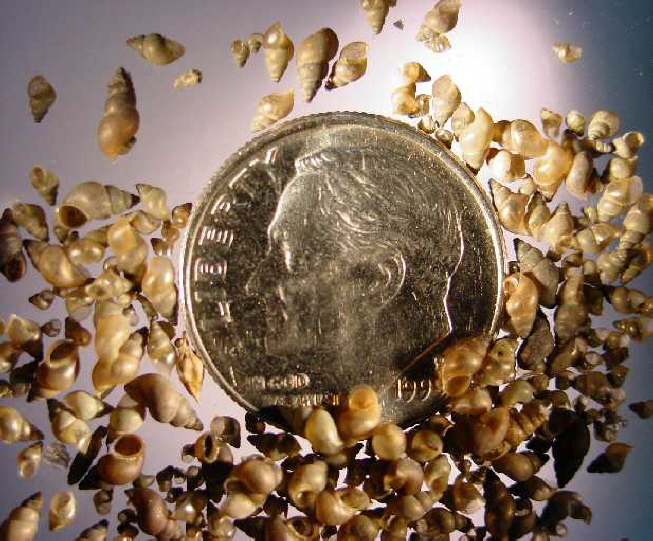New Zealand Mudsnail

New Zealand Mudsnail
(Potamopyrgus antipodarum)
Tags: Aquatic
Identification and Reproduction
Identification:
- The New Zealand mudsnail is a small freshwater snail.
- Its shell is elongated with a dextral (right-sided) coiling, consisting of 7 to 8 whorls.
- Their colouration ranges from grey, dark brown to light brown.
- They are quite small and their shell on average measures to be 5 mm long. In their native range they can grow up to 12 mm.
- The New Zealand mudsnail is an operculate snail, where the operculum acts as a lid to the shell.
Reproduction:
- These snails can reproduce sexually and asexually. Females are born with developing embryos in their reproductive system. For this reason introduced infestations are predominantely female.
- All introduced populations of the New Zealand mudsnail are clonal, meaning they are all genetically identical females.
- Females can possess between 20 and 120 embryos.
- They can produce up to 6 generations a single year.
- They produce an average of 230 young per year.
Habitat & Ecology
- This snail thrives in disturbed watershed environments.
- They are frequently found in the littoral zones of lakes, as this area of the lake offers the most silt and organic matter.
- It can withstand high flowing environments because they are capable of burrowing into the sediment.
- They can form infestations in both fresh and brackish water.
- These snails feed on plants and animal detritus, along with algae and diatoms.
- They can withstand temperatures between 0-34oC.
- Research has shown that the New Zealand mudsnail are able to survive passage through the digestive tract of some fish and bird species. This has helped distribute them futher.
Impacts
- They reproduce rapidly, at dense populations.
- They can cause damaging impacts to aquatic food webs.
- They consume a large amount of green algae, causing an increase in nitrogen fixing diatoms.
- They can compete with native molluscs for food and space.
- They also reduce and can take over the food source of some of native animals in the environment.
- Although they take over rapidly, they provide a poor, indigestible food source for wildlife.
Management
Always clean, drain, and dry aquatic equipment and watercrafts before transferring from one body of water to another.
Resources
For more details check out the Invasive Species Compendium datasheet on Potamopyrgus antipodarum (New Zealand mudsnail).
For more information on the New Zealand mudsnail and its general impacts, refer to the Global Invasive Species Database here.
Header photo (Mikhail O. Son).




